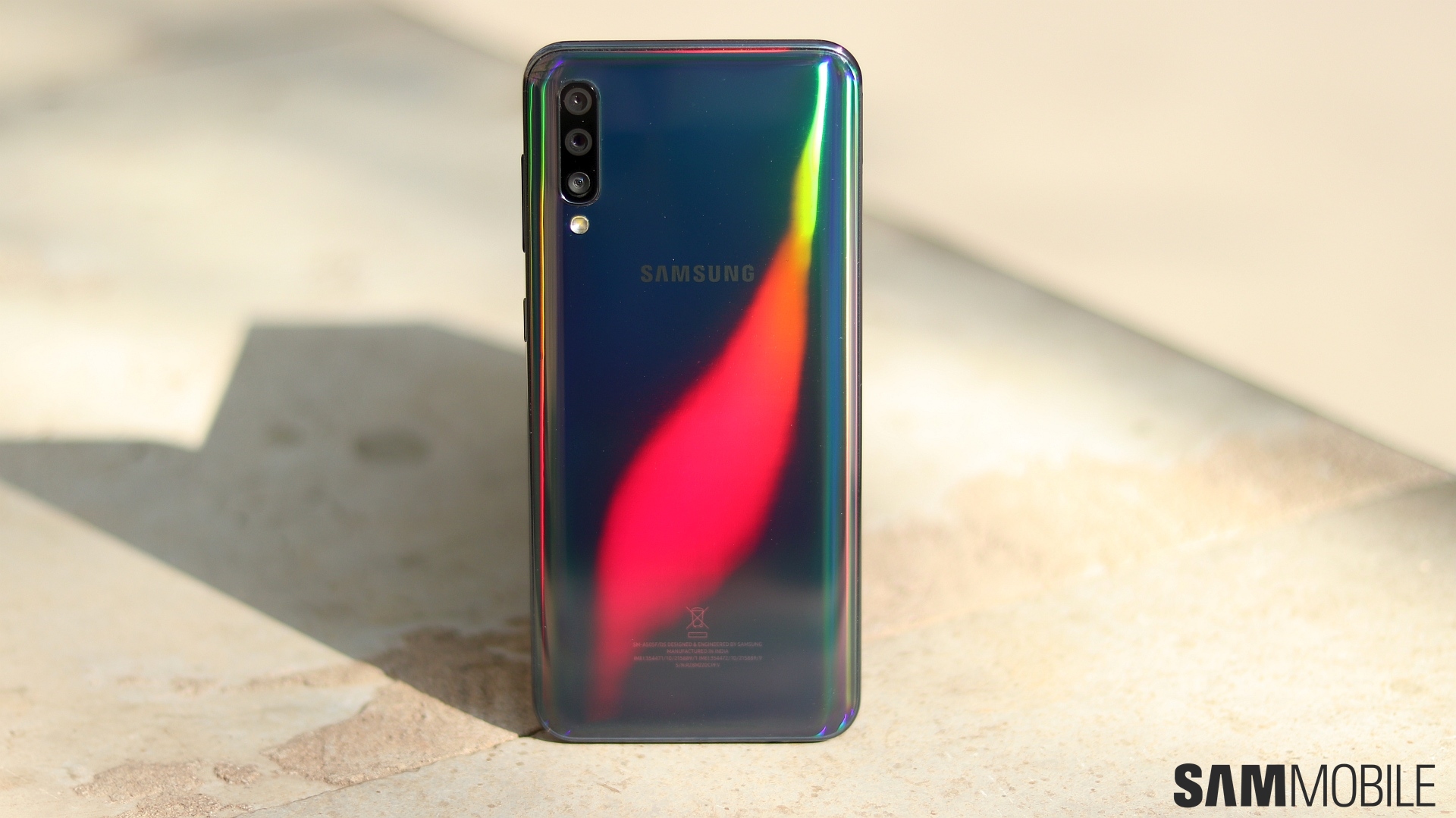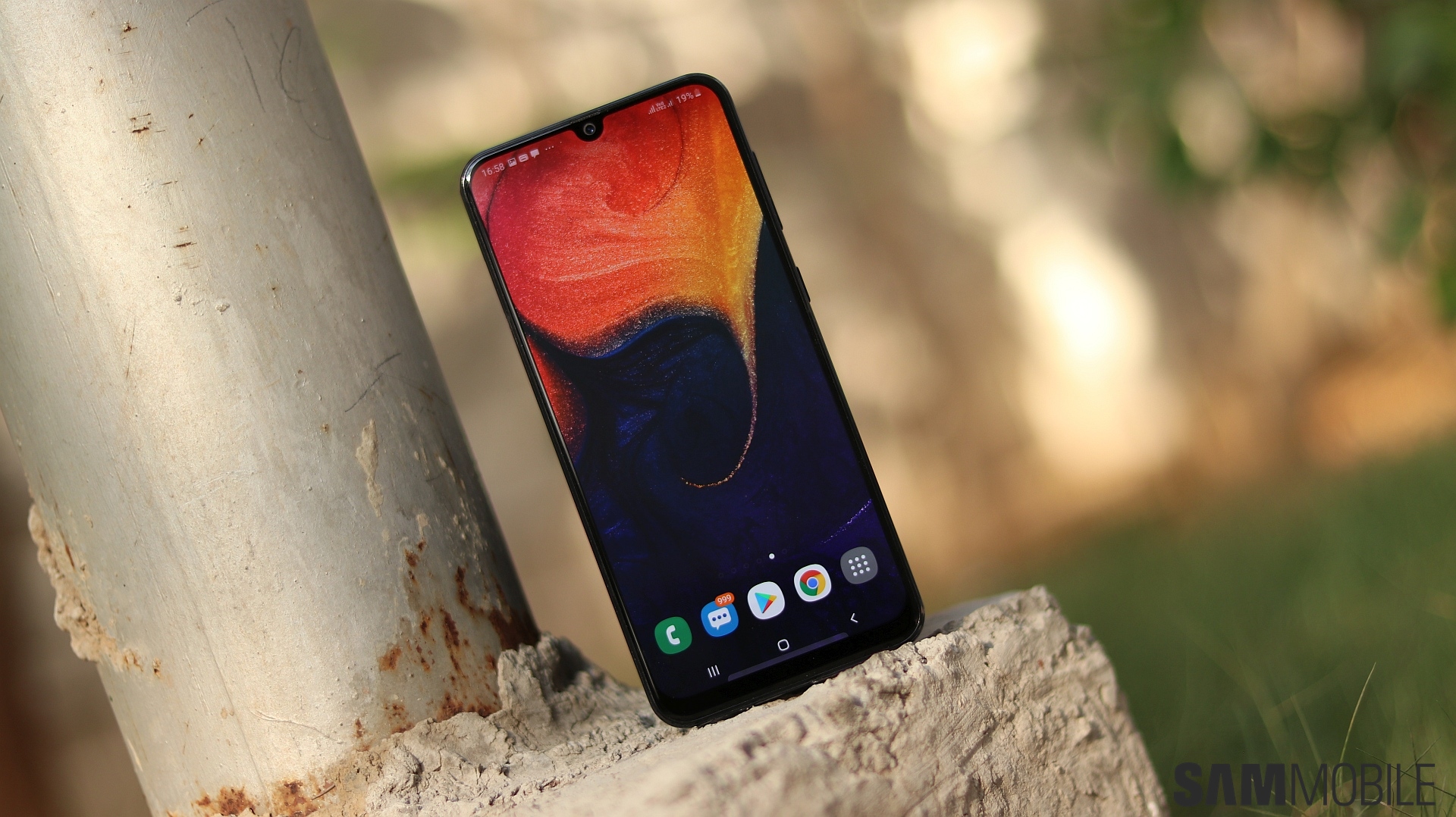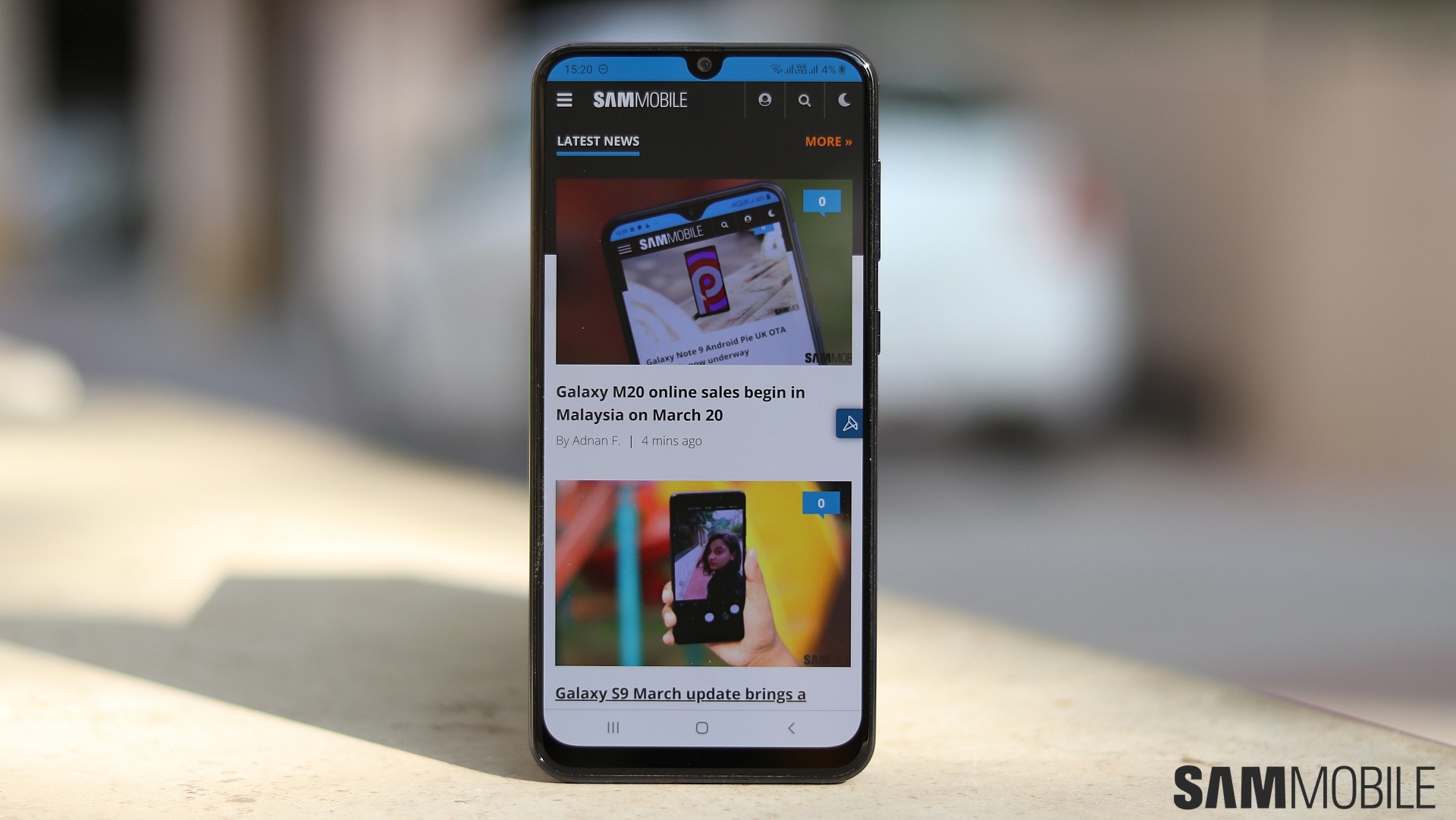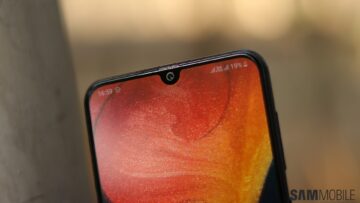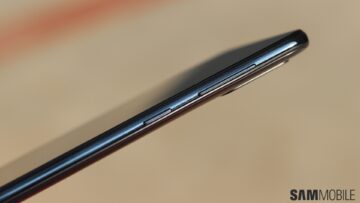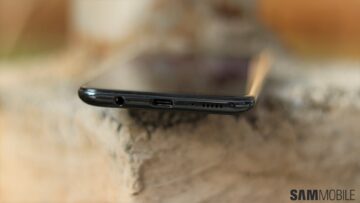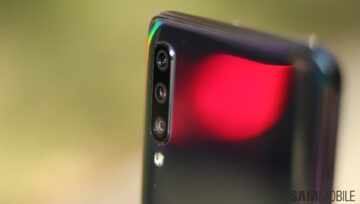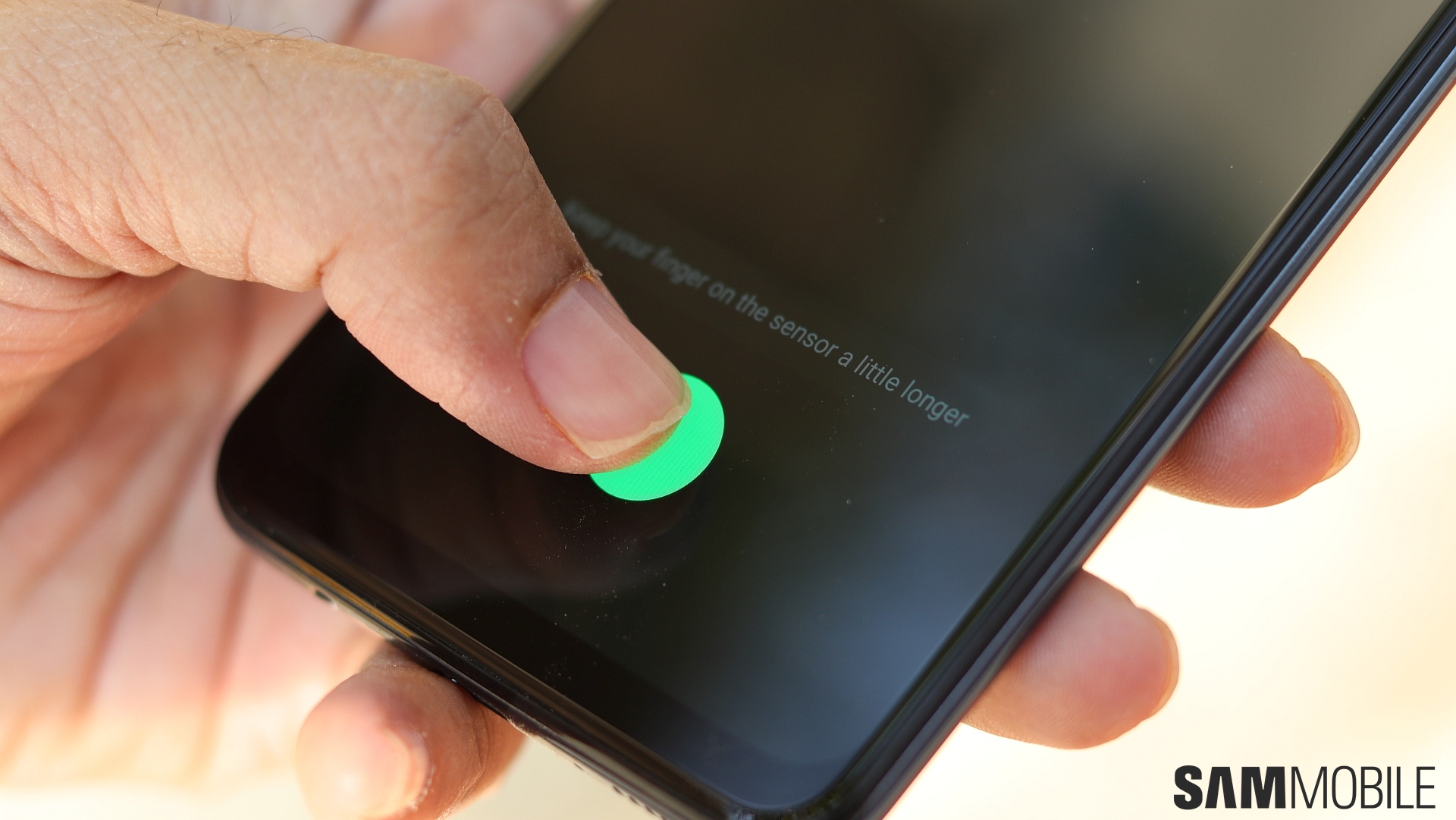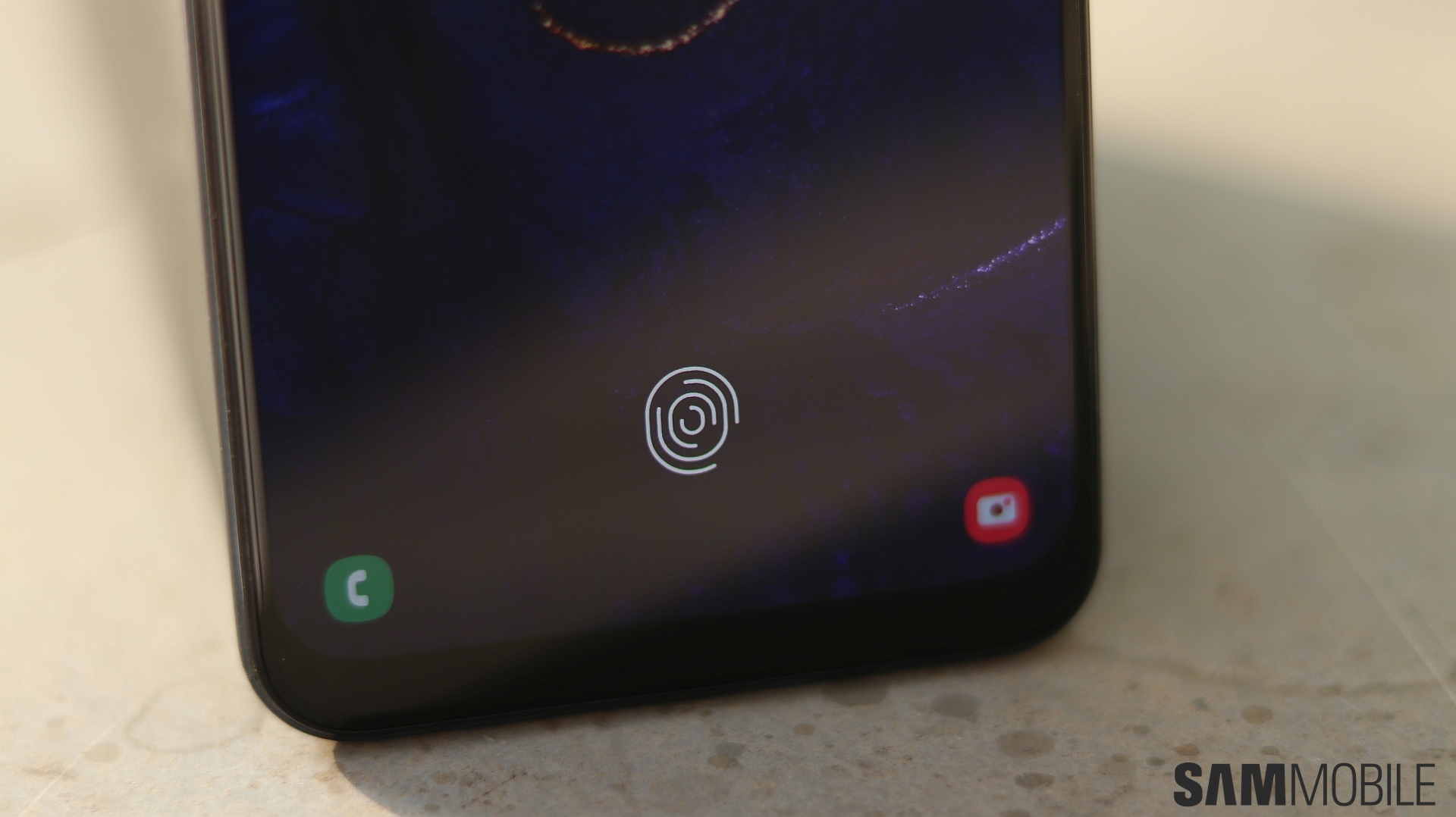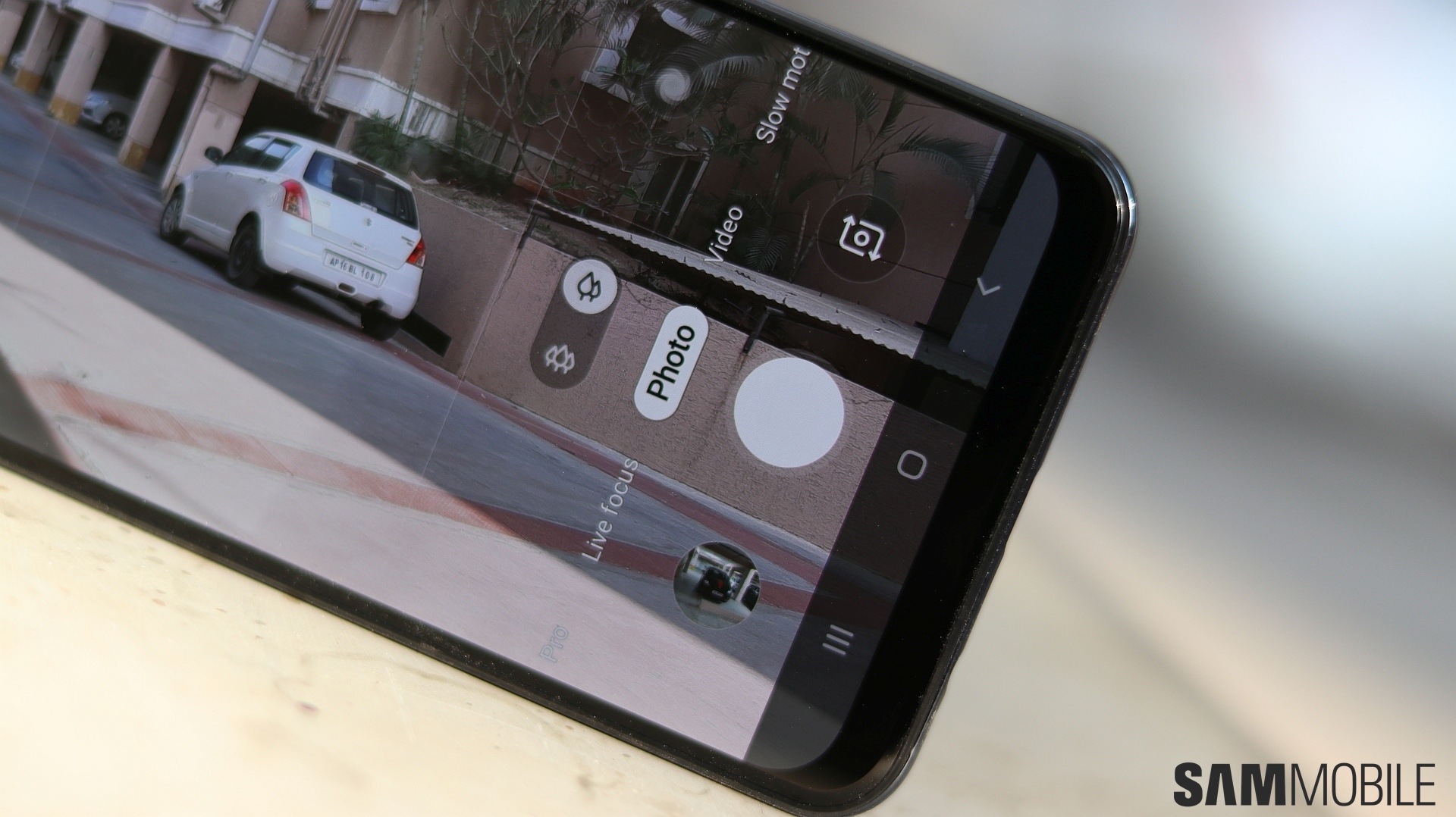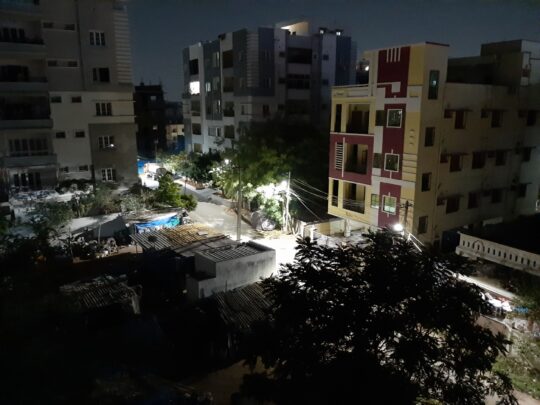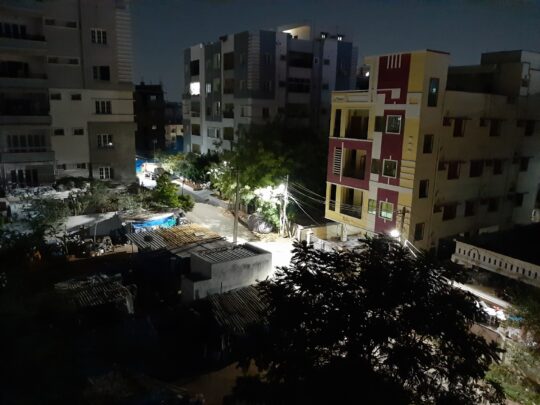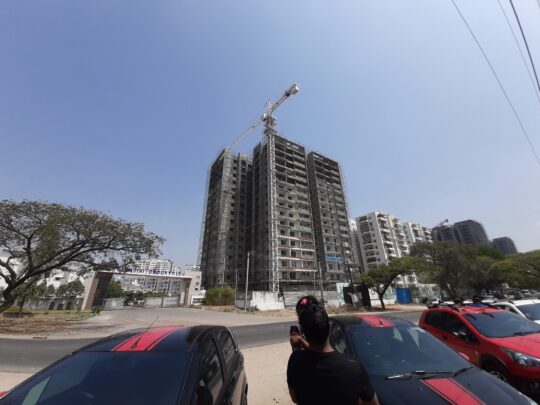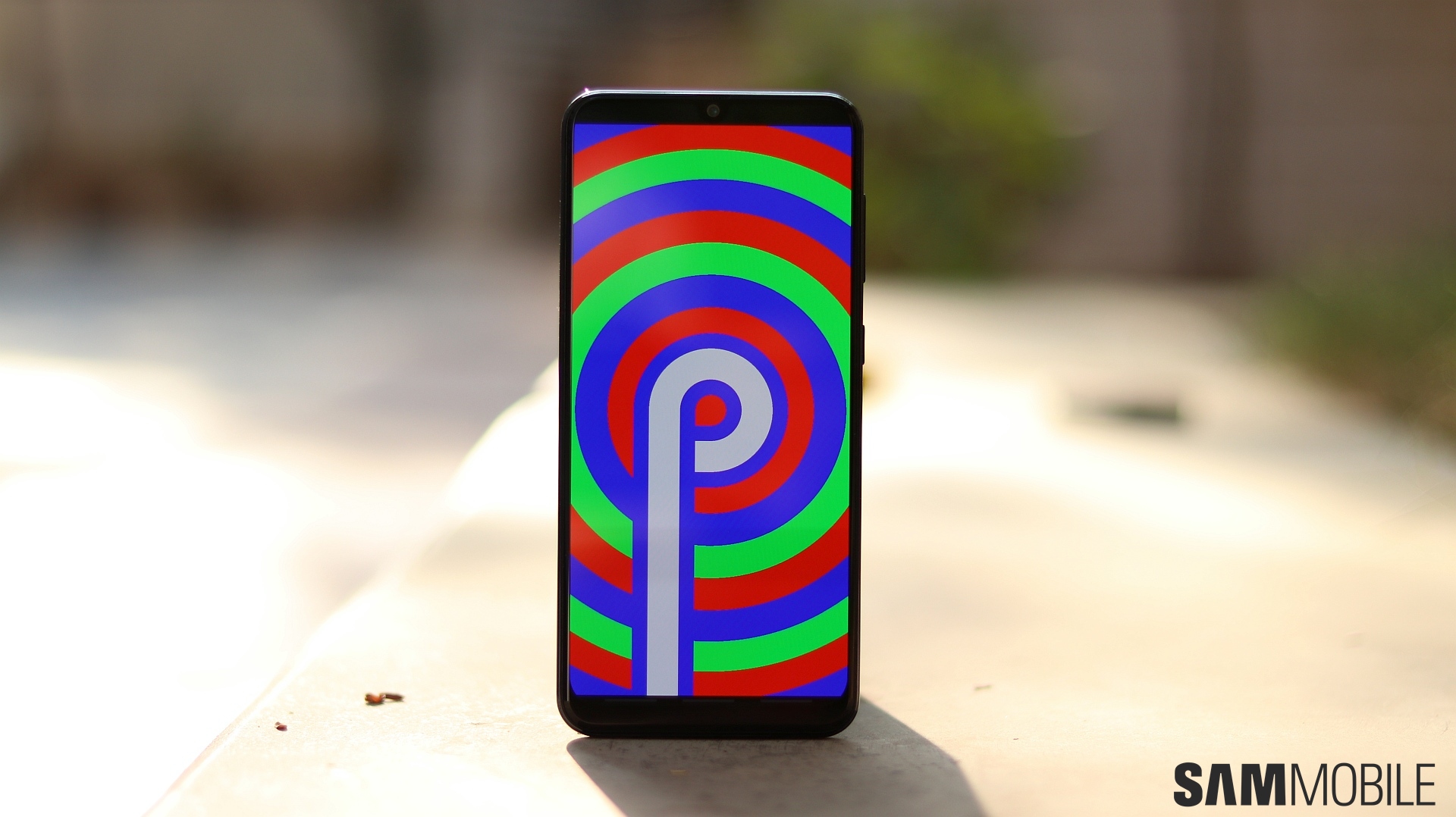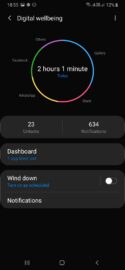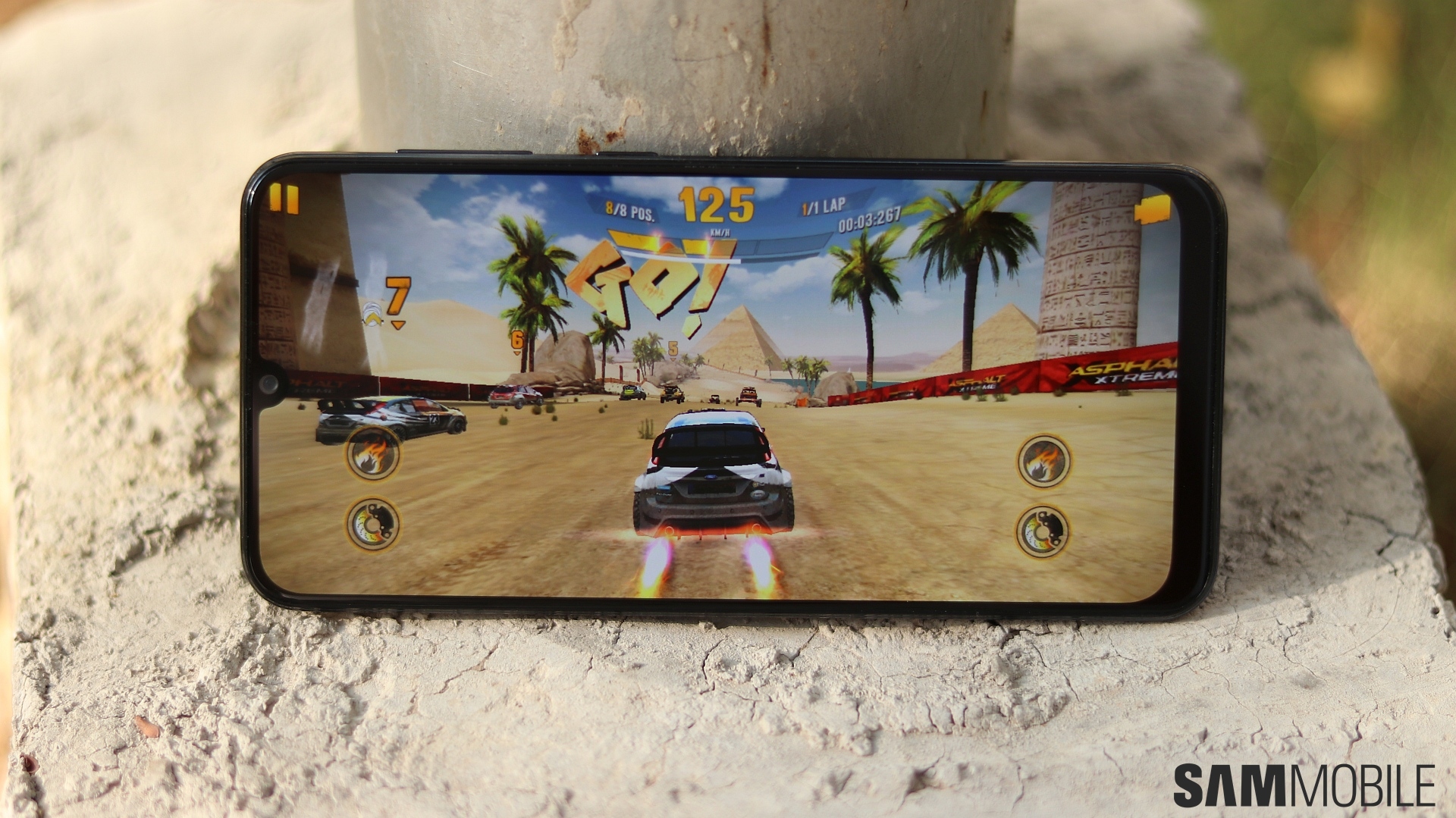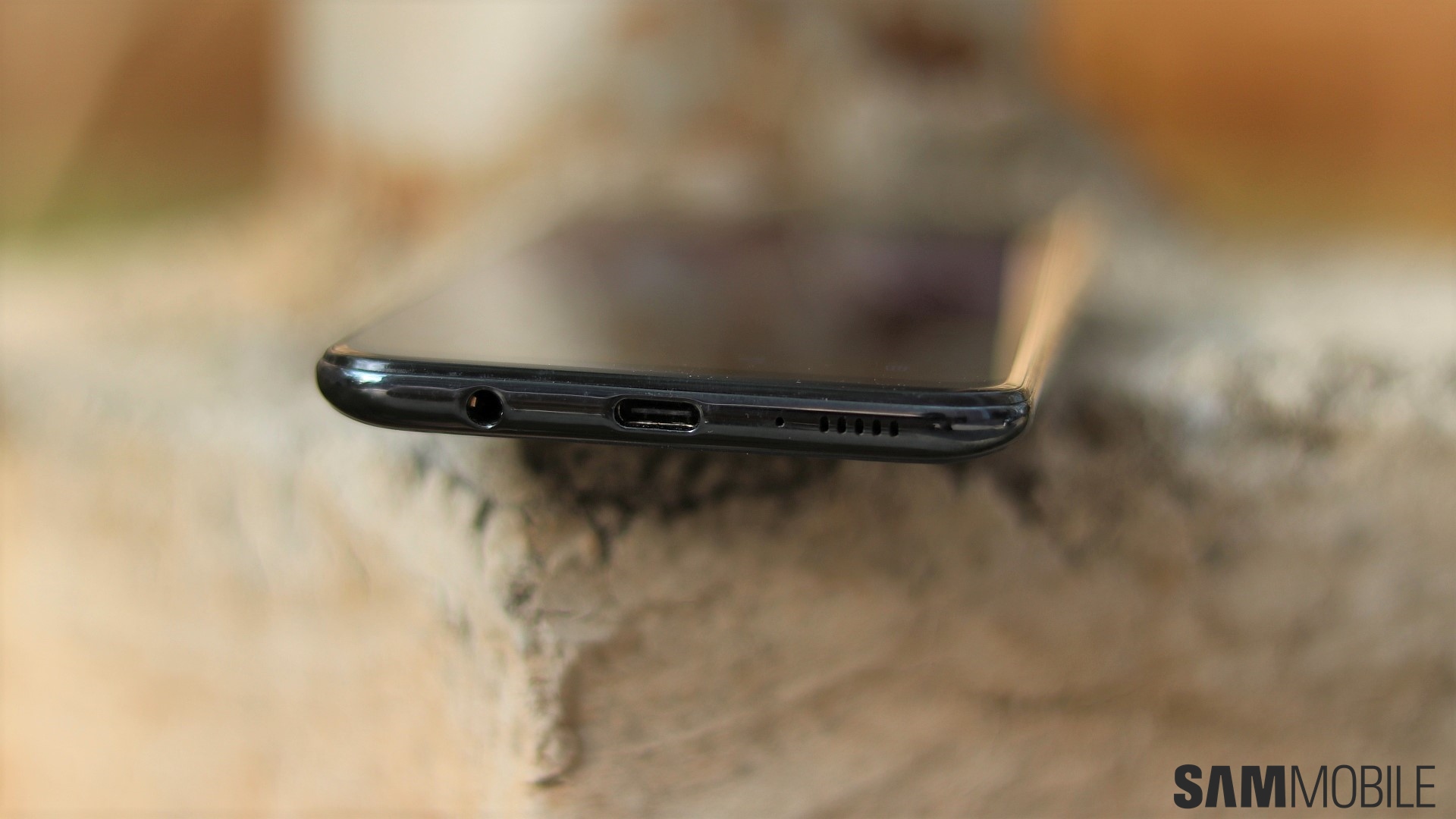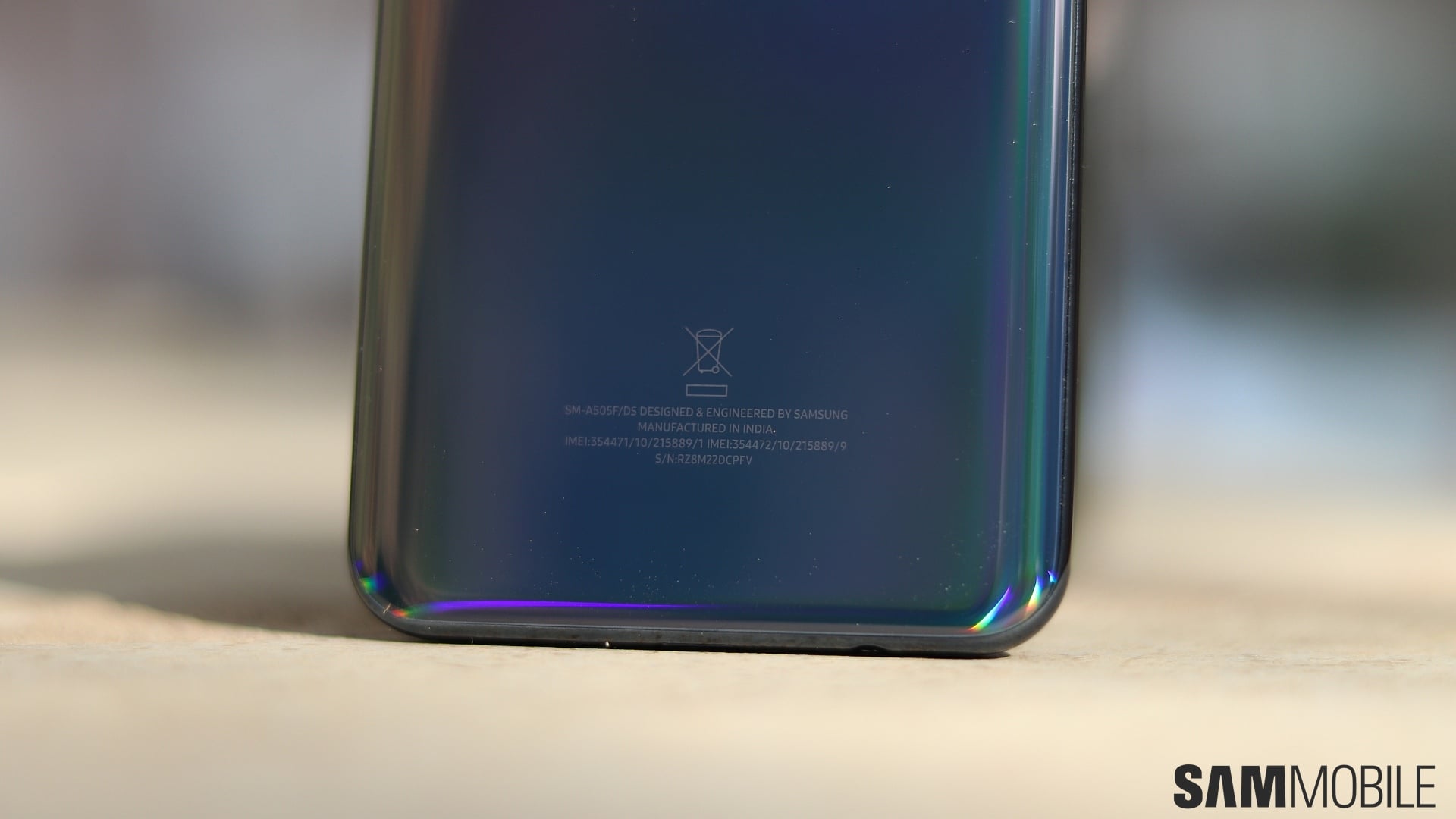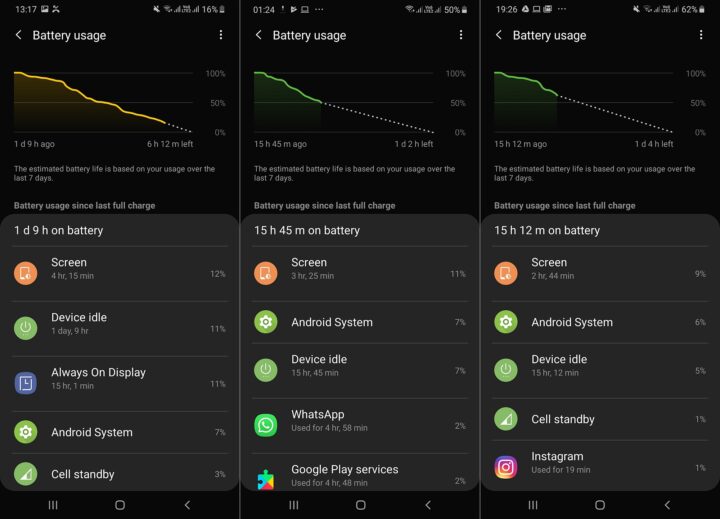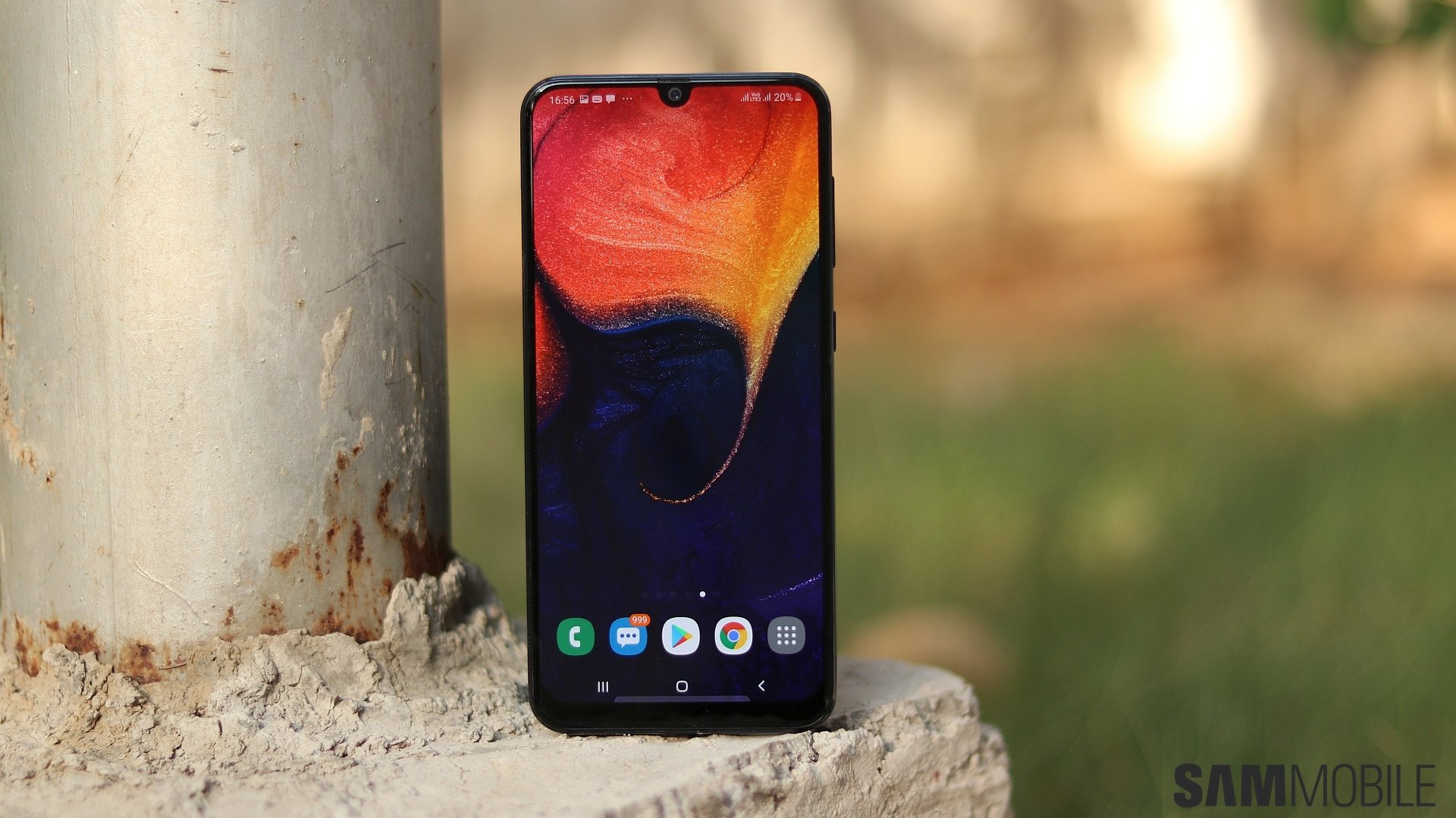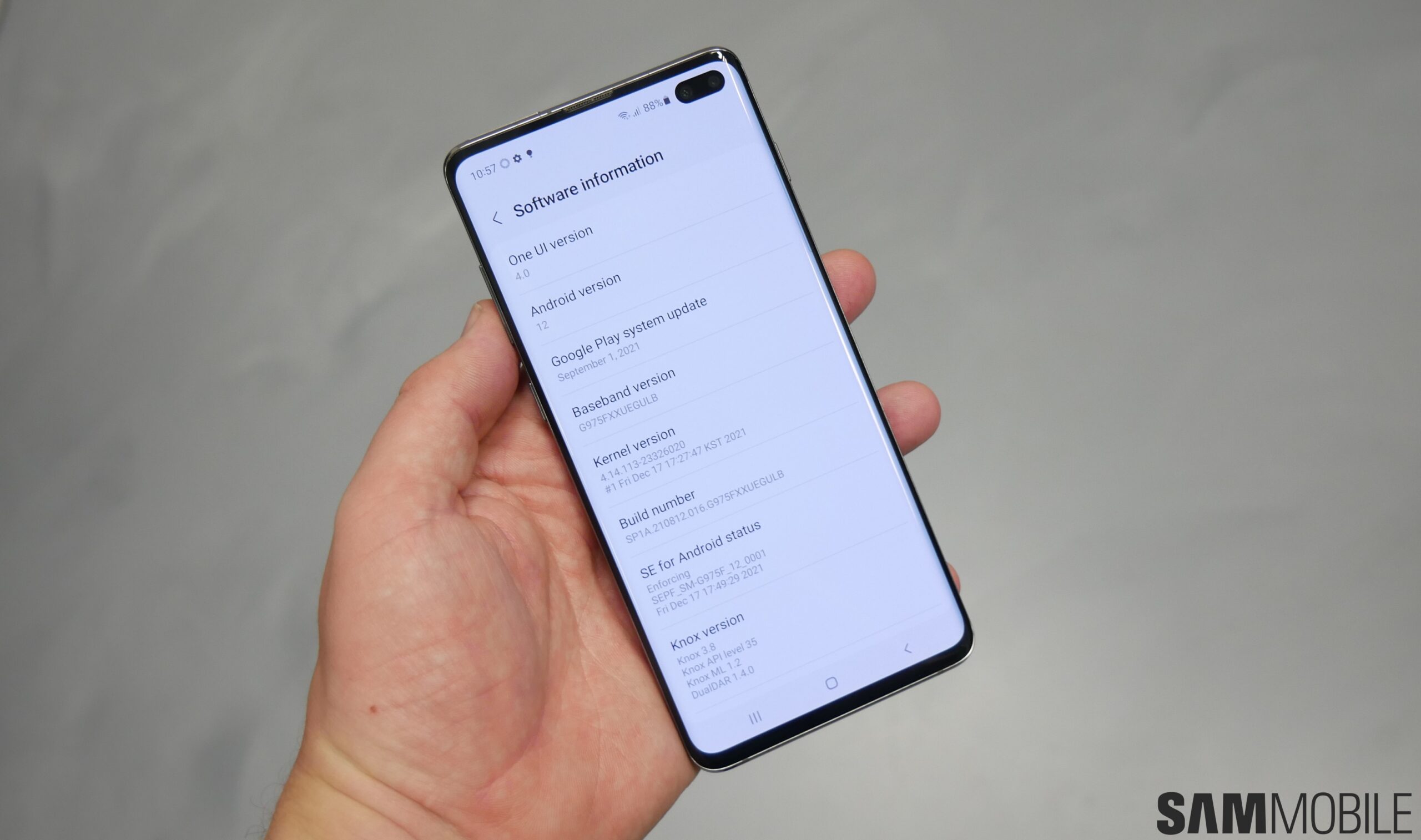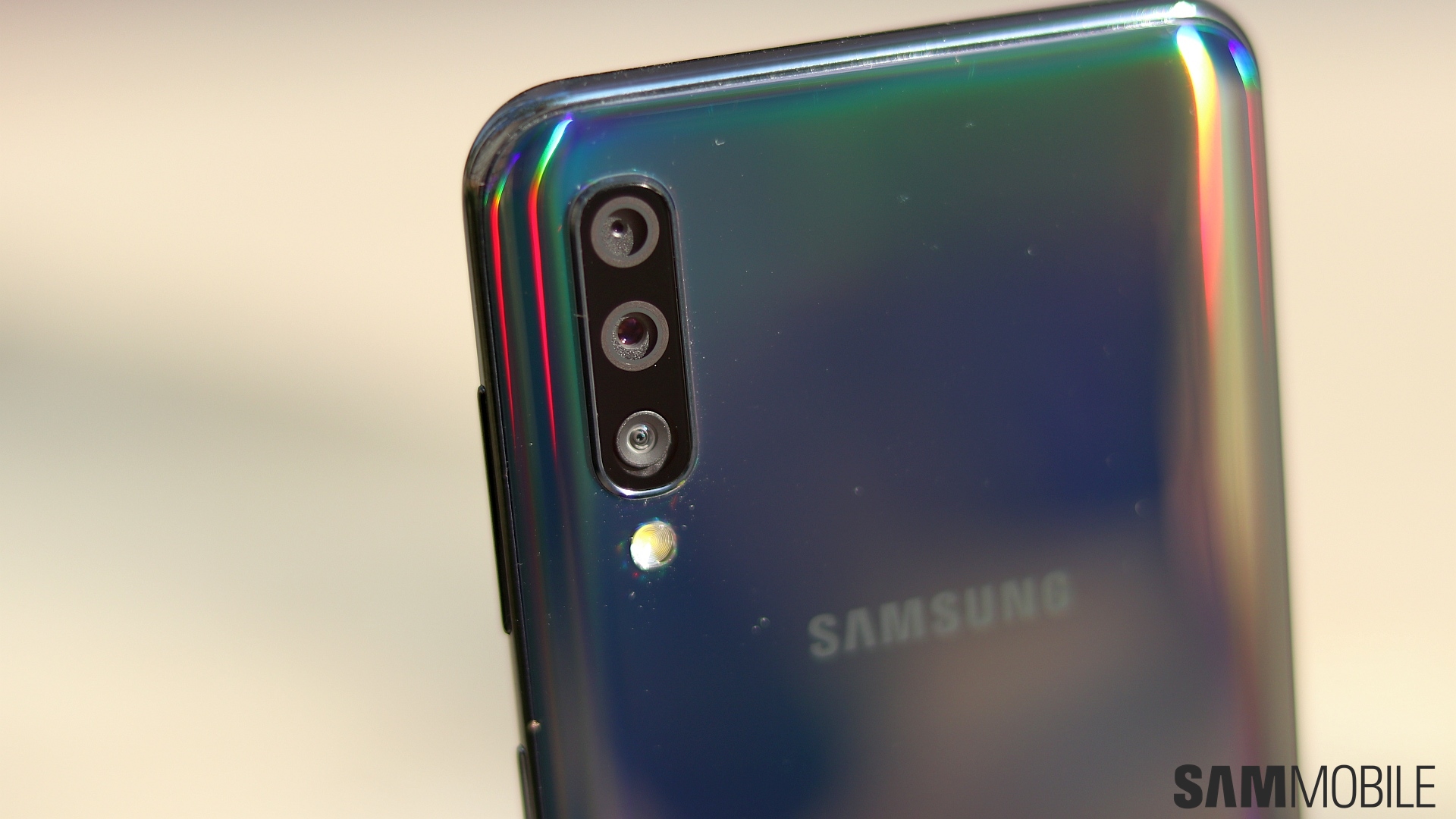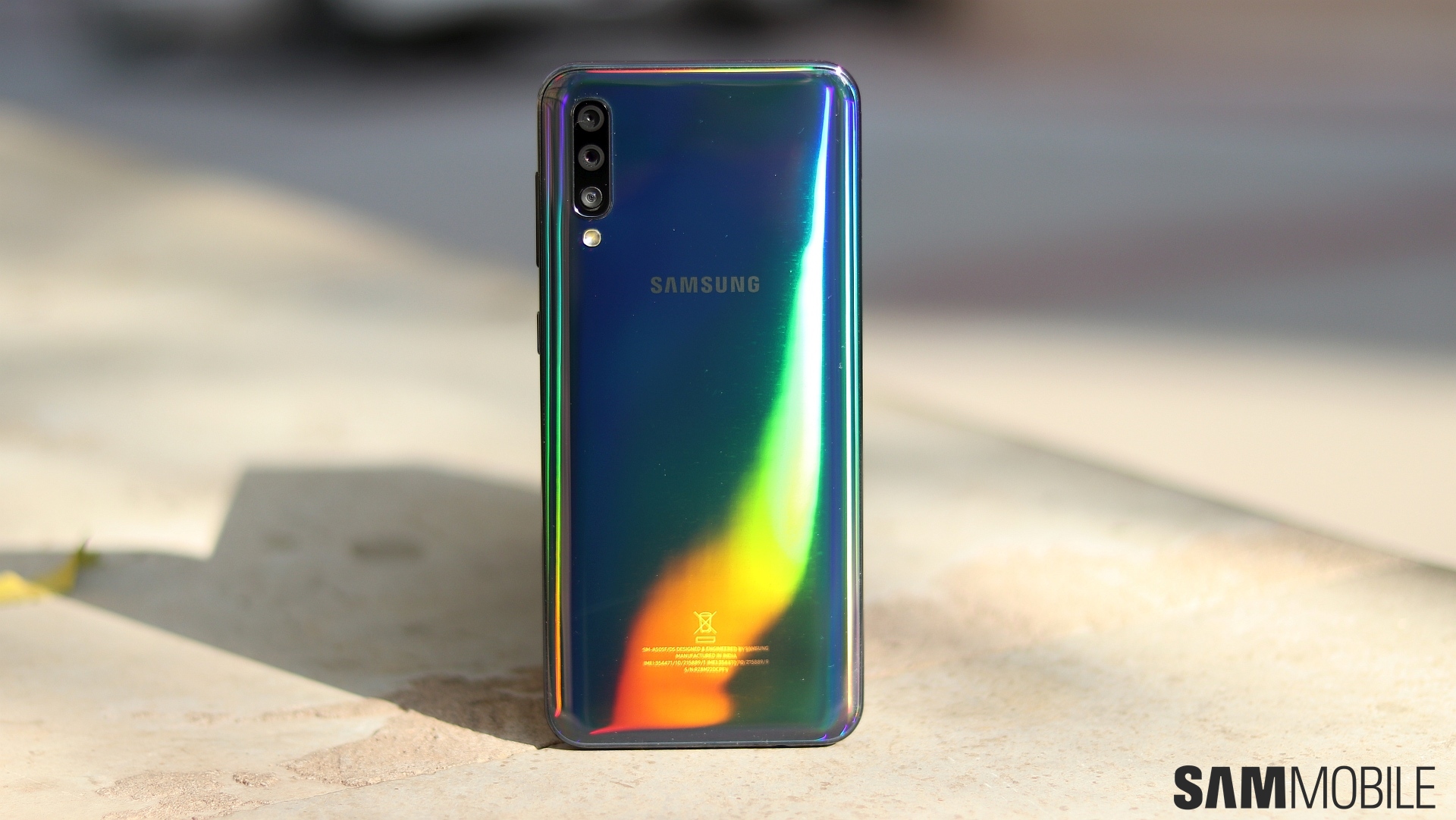
Like the Galaxy M20, the Galaxy A50 is rather well equipped for the asking price (₹19,990, or $292), undercutting the Galaxy A7 (2018) that Samsung launched a few months ago with lesser specs but a slightly higher price than the A50's. It's the first Galaxy phone with an optical fingerprint sensor that sits under the display, and it comes with other impressive features like the new Exynos 9610 chipset, a big Super AMOLED display with small bezels, and triple rear cameras.
Do all the specs come together to make for a compelling user experience? Buckle up and keep reading to find out!
Galaxy A50 review: Design and display
The Galaxy A50 looks quite similar to the Galaxy M20 from the front. The notch in the top center of the display is slightly rounder than the M20's as the A50 has an Infinity-U display and not an Infinity-V display, but the difference is negligible. At the back is what Samsung is calling glastic, which is plastic that looks like glass. The plastic doesn't result in the A50 feeling cheap in the hand, and it's not very heavy, either.
The back has gradient coloring, and our black review unit gets rainbow-like patterns that make it look absolutely stunning. The back also holds a triple rear camera setup with the three sensors stacked vertically, same as the Galaxy A7 (2018) or A9 (2018). One-handed usage is fairly easy thanks to the small bezels around the 6.4-inch Super AMOLED display, but like all devices with such big screens, you will need to move around the A50 in your hand to reach all corners of the screen in one-handed usage.
The Galaxy A50's Super AMOLED display is pretty impressive. It's got all the usual suspects that you expect: vivid (but not too vivid) colors, high brightness levels, deep blacks, and wide viewing angles. The notch isn't much of an intrusion, and you'll be ignoring it in no time whether you're watching a video or playing a game. In fact, what will turn you off more is the size of the chin below the display compared to the rest of the bezels. It helps make the on-screen navigation keys less of a discomfort to use, but Samsung certainly has room to make that chin smaller on future devices.
Optical in-display fingerprint reader
When I first set up the in-display fingerprint sensor on the Galaxy A50, I felt like it wasn't that slower than the ultrasonic sensor on the Galaxy S10+. My opinion changed after a couple of days, though. The A50's fingerprint sensor lights up when you tap it, but despite registering my finger by tapping it on the sensor every which way and saving multiple copies of the same finger, I ran into too many errors. What's worse is that it would sometimes tell me to keep my finger on the sensor a little longer, only to tell me that there was no match after I'd done that.
Dry fingers seem to be a problem for these in-display fingerprint readers, whether optical or ultrasonic, and as someone with perennially dry hands, I had a tough time getting the A50's fingerprint reader to work for me on a single try. And I don't think people should be expected to keep their fingers moisturized just so these fancy new fingerprint sensors can do their job properly. Physical fingerprint sensors have become so perfect at this point that these in-display sensors just seem like a step backwards.
The Galaxy A50 comes with facial recognition, and with Android Pie's Lift to wake feature, facial recognition was my biometric method of choice. Facial recognition doesn't work with any apps, though, as it's not an official biometric feature in Android, so you'll struggle with the fingerprint reader in apps that offer fingerprint recognition as a way of authentication. Perhaps you'll have fewer problems if your fingers aren't dry as mine, but my personal experience makes me wish Samsung would just go back to capacitive fingerprint sensors and place them on the side of the device.
Camera
The Galaxy A50 comes with a triple rear camera setup that includes a 25MP primary lens, 8MP ultra-wide lens (123-degree field of view), and a 5MP depth sensor. It's a setup similar to the Galaxy A7 (2018)'s, only the primary camera is a 25MP sensor and not a 24MP sensor, and picture quality hasn't changed as a result. The primary camera takes good photos in ample natural light but falters in low-light scenes. Detail gets smudged out in low-light conditions, and if there are too many artificial lights around, the phone can also overexpose shots.
The ultra-wide camera is the star of the show here, allowing you to capture a lot more in a single picture. However, pictures taken with the ultra-wide sensor look different from those taken with the primary rear camera. The lower resolution means you can't zoom in on pictures too much, and since the ultra-wide lens has F2.2 aperture (the primary camera is F1.7), it fails to take useful photos in the dark. Thankfully, Samsung has added the option to manually change exposure of the scene before taking ultra-wide shots even though there's no autofocus, something that was missing on the Galaxy A7 (2018) and the Galaxy M20.
The scene below was taken with both the primary and ultra-wide cameras and is followed by a gallery of more samples from the two cameras.
The third rear camera is the 5MP depth sensor that enables Live Focus (bokeh) pictures. It does a good job most of the time, but the background blur can sometimes look artificial, possibly because of the disparity in resolution of the primary and depth cameras. Live Focus photos taken during the day usually come out nice, with enough separation between the subject and the background. Things can get a bit overexposed in bright daylight, though. Nighttime Live Focus photos are usually good as well, but the phone can fail to add the bokeh effect without sufficient light, which is to be expected.
The front camera can also take Live Focus photos. It's a software trick that does great in ample light and not-so-bright conditions, although the camera tends to soften the face a bit if there isn't enough light. As for regular selfies, the same applies: You get plenty of detail in daylight pictures and a softer output indoors and in low-light conditions.
Below are some Live Focus pictures from the rear and front camera, along with some regular selfie samples.
Software
The Galaxy A50 (along with the Galaxy A30 and Galaxy A10) is Samsung's first non-flagship device that comes with Android Pie and Samsung's One UI skin out of the box. And it's the newest version of One UI as well (One UI 1.1), the same as the one found on the Galaxy S10. One UI 1.1 brings support for Google's Digital Wellbeing feature, which tells you how much you use your phone everyday and lets you set alarms and timers to inform you that you've used the phone or a particular app too much.
The A50 supports Bixby Voice despite not having a dedicated Bixby key. Samsung is now letting users assign the power button to launching Bixby Voice, and it's a clever move. Once the power button is mapped to Bixby, the power options for restarting or shutting down the phone are moved to the status bar, with a power toggle next to the settings button. This is exclusive to Android Pie, but it remains to be seen if Samsung will bring it to mid-range and budget phones that get Android Pie in the future, as the Galaxy A30 doesn't have it despite running Android Pie out of the box.
Other features on the Galaxy A50 include One UI's Night mode, Always On Display, Secure Folder, Dual Messenger, One-handed mode, Game Launcher, Blue light filter, and navigation bar gestures. You get gesture options such as Lift to wake and Double tap to wake, and Samsung has also been quite quick with software updates in the short time the A50 has been on the market. It was among the first Galaxy phones to get the March security patch, for example, although the fingerprint and camera improvements that Samsung mentioned in the updates don't seem to have made much of a difference.
Performance
The Exynos 9610 inside the Galaxy A50 is Samsung's most powerful Exynos chip for mid-range phones yet. It has four Cortex-A73 cores clocked at 2.3GHz for heavy tasks and four Cortex-A53 cores clocked at 1.7GHz focused on efficiency, along with the Mali-G72 GPU. The Exynos 7904/Exynos 7885 that has powered phones like the Galaxy M20 or the Galaxy A8 (2018) had only two Cortex-A73 cores, so the 9610 is better equipped to handle tasks such as gaming. And it does make a difference.
I tend to test a couple of high-end games on every new budget and mid-range Samsung phone, and two particularly heavy titles are Batman: The Enemy Within and Life is Strange. I chose these games because they're ports of games for consoles and Windows PCs and, therefore, put a phone through its paces. Batman: The Enemy Within has always had trouble running on Samsung's non-flagship phones with Full HD displays, but that is finally no longer the case. Life is Strange doesn't run completely smooth yet, but it's certainly more playable than it is on phones with Samsung's Exynos 7904/7885 chipsets.
Sadly, the A50 isn't the best performer in day-to-day usage. It works well for the most part, but I ran into some stutters and lags here and there, especially after unlocking the phone. Perhaps it's not as bad on the variant with 6GB of RAM, but the 4GB RAM variant that I tested could do with some optimization. I was surprised, frankly, given the specs of the Exynos 9610. Again, it's not too bad, but general performance could have been better. Oh, and the A50 never seems to get noticeably warm, which was a bonus
Audio and call quality
The Galaxy A50 gets a single bottom-firing loudspeaker that's fairly loud in a small room but not sufficiently loud in busy areas. There's barely any bass and the high frequencies (treble) can be a bit too shrill at times. The included earphones aren't great, either. In fact, Samsung has bundled the same earphones that we see on the company's Galaxy J series phones with the A50, so they are as basic as they can get. You do have Dolby Atmos support for wired and Bluetooth audio, and enabling that results in higher volume and slightly better separation between the left and right channels.
Calls and network reception worked as expected. The A50 had no trouble latching on to the LTE networks on both SIM slots and was able to catch a signal even in low-reception areas. Calls made on the device came in clear, but the call volume should have been higher, especially since Samsung has also removed the extra volume option for calls on its devices with Android Pie.
Battery life
The Galaxy A50's 4,000 mAh battery does an excellent job at letting you get through a full day of fairly heavy use. With light to moderate usage, you can easily make it into the next afternoon before you need to charge the phone. Always On Display does reduce total usage time by a few hours, but it still gets you through an entire day. And that's with two SIMs in the phone. Single SIM users may see better battery life.
The phone has fast charging support and comes with a fast charger bundled in the box. I found the fast charging speeds to be a tad slow when charging from 0 percent, but total 0-100 charging time is around two hours, which is par for the course. You also get Samsung's standard power saving modes, none of which I felt the need to use over the period I had the A50 as my primary device.
Conclusion
The Galaxy A50, like the Galaxy M20, isn't great in any one aspect other than that Super AMOLED display, but the overall package is a good one for the asking price (₹19,990, or $292) for a Samsung smartphone. Samsung continues to be the only manufacturer giving you ultra-wide rear cameras in the budget and mid-range, and the Galaxy A50 has excellent battery life and comes with Android Pie and Samsung's latest One UI interface and features.
In my opinion, the biggest misstep is that in-display fingerprint sensor, which simply doesn't match the accuracy and consistency of capacitive fingerprint sensors. The Galaxy A50 also falters in general day-to-day performance despite the fairly powerful Exynos 9610 chipset under the hood. The rear cameras could also do with improvement in low-light conditions and that ultra-wide camera could have a higher megapixel count, although none of these are deal-breakers.
Samsung also has two of its own phones undercutting the Galaxy A50. If you can make do with a weaker processor, an LCD display, and Android Oreo, the Galaxy M20 can be purchased for considerably less. The M20 also gets you a 5,000 mAh battery. The same goes for the Galaxy M30 that Samsung announced recently, which has a Super AMOLED display like the A50. And both of these M series phones have a physical rear-mounted fingerprint sensor, which is an advantage over the optical in-display fingerprint reader.
However, if you're not willing to compromise and want the latest tech and software, the Galaxy A50 is a pretty good option that won't break the bank.
Buy Galaxy A50: Flipkart | Amazon India | Samsung Shop
| Pros | Cons |
| Beautiful AMOLED display | Slightly lacking in day-to-day performance |
| Stunning gradient finish on the back | Optical fingerprint sensor is too finicky |
| Can run high-end games with ease | Higher-resolution ultra-wide camera would be nice to see |
| Excellent battery life, fast charging support | Smaller bezel below display would improve viewing experience |
| Good daylight camera performance and useful ultra-wide camera | No notification LED |
| Takes good regular and bokeh selfies | |
| Android Pie with One UI out of the box, Bixby Voice support |














